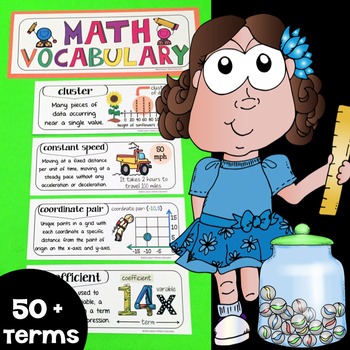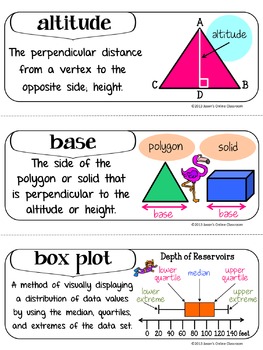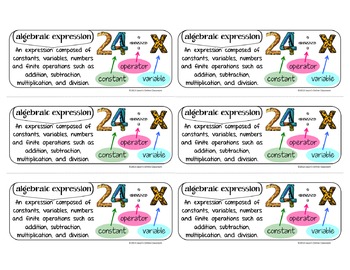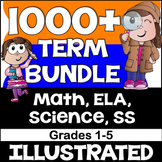Math Word Wall & Interactive Notebook Vocabulary for 6th Grade {Focus Wall}
- Zip
Also included in
- This is a bundle of ALL of our vocabulary resources at a huge discount price. Please see the individual preview files for each resource. This product is sold AS IS meaning it is NOT EDITABLE. Due to licensing restrictions on the clip art and fonts used within the file, we are not allowed to offerPrice $25.00Original Price $45.94Save $20.94
- Since I can't offer you a classroom break, at least you get a break in the price for these 125+ resources to keep your class busy all year long. Once purchased, just download the resource you need and you're set to go. Come back to your purchases at any time to download what you need at that time.Price $125.00Original Price $358.78Save $233.78
- This resource includes our CCSS I Can Statement Posters and our NGSS Science I Can Statement Posters for Grades K-5. It also includes our general vocabulary resources for ELA, Math, Science, and Social Studies. The vocabulary was custom created by us and does not align specifically to any standardPrice $61.88Original Price $111.88Save $50.00
Description
This resources includes 52 vocabulary words, phrases, and concepts. We've tried to make the definitions as kid friendly as possible while still maintaining the integrity of the concepts.
Other Vocabulary Resources
BUY NOW, PRINT LATER, USE FOREVER!
Potential Uses
- Word Wall Displays
- Interactive Notebooks Vocabulary Inserts
Supplemental Common Core Standards Resources
Common Core Standards "I Can Statements" - Math & ELA Bundle (Kindergarten)
Common Core Standards "I Can Statements" - Math & ELA Bundle (1st Grade)
Common Core Standards "I Can Statements" - Math & ELA Bundle (2nd Grade)
Common Core Standards "I Can Statements" - Math & ELA Bundle (3rd Grade)
Common Core Standards "I Can Statements" - Math & ELA Bundle (4th Grade)
Common Core Standards "I Can Statements" - Math & ELA Bundle (5th Grade)
This product is sold AS IS meaning it is NOT EDITABLE. Due to licensing restrictions on the clip art and fonts used within the file, we are not allowed to offer this as an editable document.
Math Vocabulary | Math Word Wall Vocabulary with Examples | Math Vocab Word Wall
This math word wall vocabulary resource makes for quick and easy setup of a vocabulary bulletin board display, a math focus wall, or simply a math reference for the math interactive notebooks of your students.








